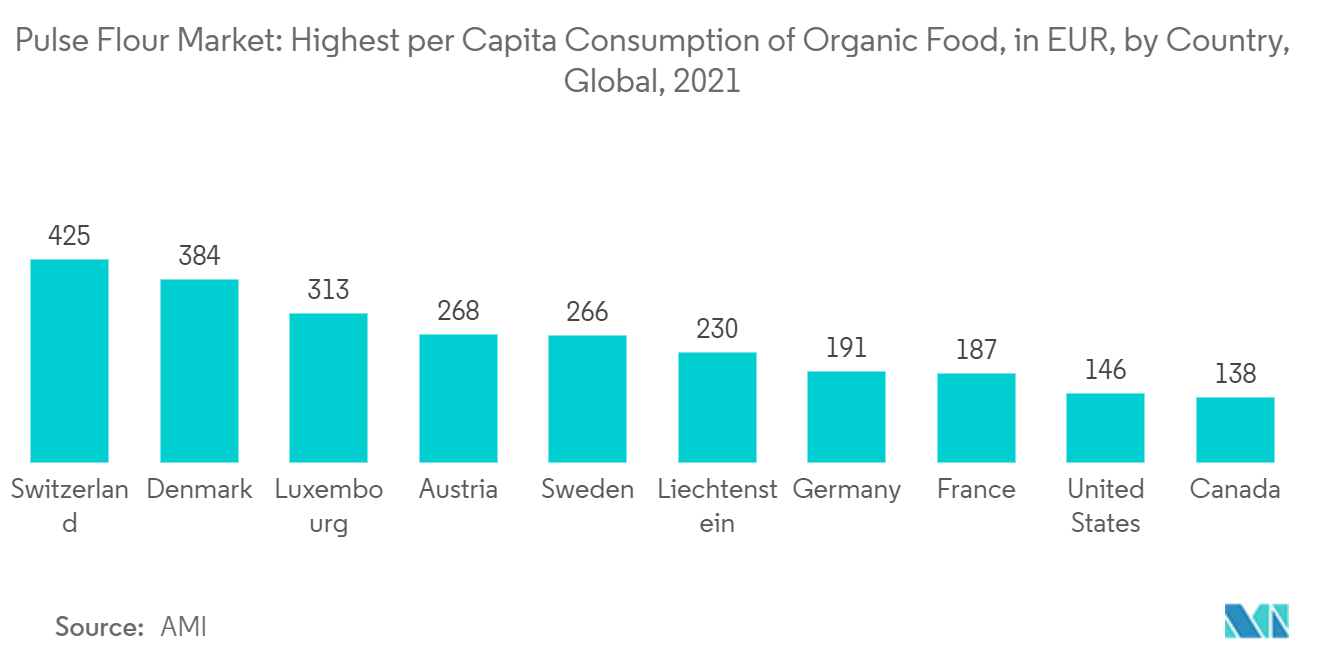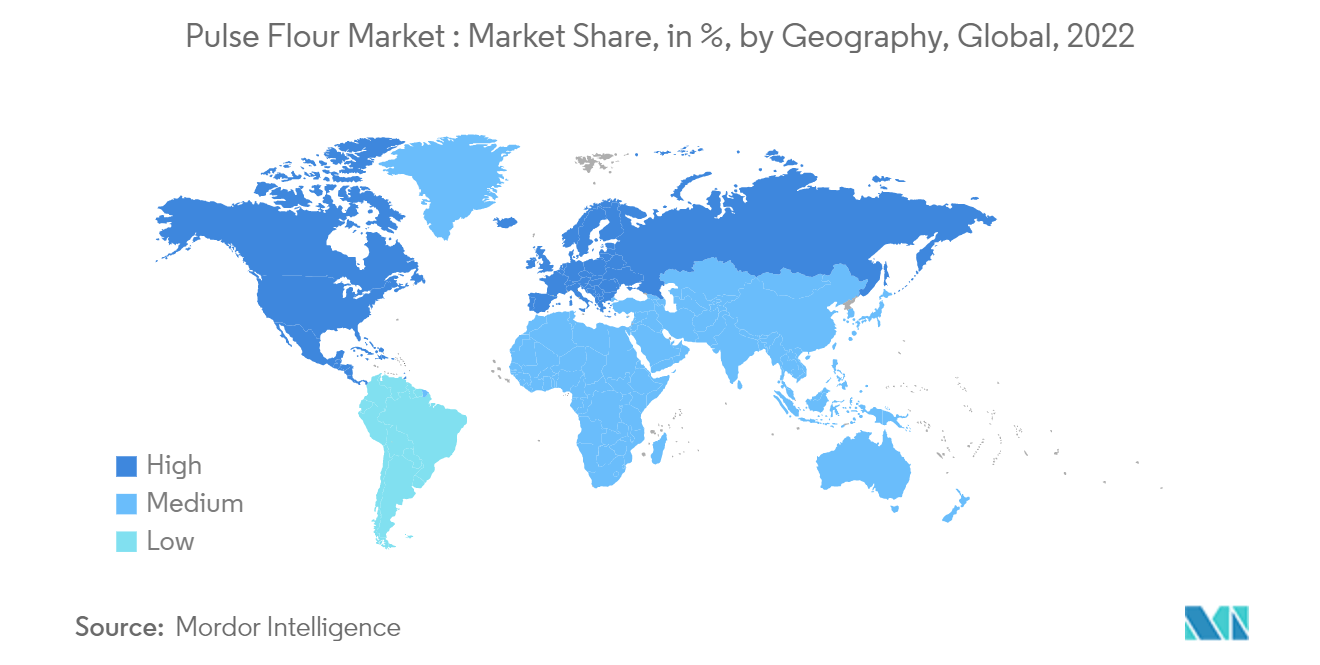Market Trends of Pulse Flour Industry
Growing Demand for Organic and Gluten-free Flour
The rise in consumer awareness regarding gluten sensitivity has propelled the demand for gluten-free flour globally. Pulse flour, being a gluten-free ingredient, has seen an increased preference among consumers in recent years. Although the prevalence of the celiac disease is approximately moderate globally, the number of Americans giving up eating gluten has increased over the last decade. According to the Mayo Clinic, 3.1 million Americans follow a gluten-free diet, and 72% of them are classified as PWAGs or 'people without celiac disease avoiding gluten.' Therefore, manufacturers are offering a wide range of gluten-free products using gluten-free ingredients, such as pulse flour, which range from low to high nutritional value. Further, companies have been extensively involved in the research and development of such products to cater to organic and gluten-free industries and thus, remain competitive in the market. For instance, Limagrain Céréales Ingrédients upgraded its Nutrition and Taste & Color solutions with an organic pulses flour range.
Additionally, there has been a significant increase in the demand for natural/organic/good-for-health food products among consumers in recent years, as they are becoming more aware of the adverse health effects associated with the consumption of various artificial food ingredients. Moreover, clean labeling is no longer a trend but has become a high-rated consumer demand that the global food industry is responding to by putting additional emphasis on these aspects during processing a food product. Similarly, various organizations' awareness programs and research projects have also largely promoted the use of organic ingredients extracted from plant sources in food and beverage products, as food safety is one of the primary concerns. For instance, in India, a new campaign, '#TowardsHealthyEatingwith the aim,' was launched by Organic India to promote healthy eating practices amongst children (in 2022). Also, companies like Walmart announced to promote natural ingredients which is one of their goals by 2025. According to the Walmart Sustainability Hub, the retailer started working with suppliers to remove certified synthetic ingredients in food products, which consumers do not expect to see. Therefore, all the above mentioned factors are expected to drive the market during the forecast period.

North America Holds the Largest Market Share
Lifestyle shifts and increasing environmental awareness, such as veganism and consumption of non-GMO, gluten-free products, and the growing demand for natural and healthy ingredients have been driving the pulse flour market. As a result the major players are investing in product innovation and research and development (R&D) in order gain consumer attention and to maintain their position in the market. Further expansion of the product portfolio enhance these companies' positions in the market. For instance, Nutriati launched a proprietary chickpea ingredient for plant-based meats, named Artesa Textured Pulse Protein, which is a combination of Nutriati's Artesa chickpea flour and carefully sourced yellow pea protein that is manufactured following the tightly-controlled final ingredient specifications. The key driving factor for the market is the increased demand for pulse flour in bakery applications, as it is gluten-free, offers better hydration and softness, and nutritionally enriches the products.
Chickpeas are an excellent source of proteins, vitamins, minerals, and carbs and have a lot of dietary fiber. Moreover, chickpea flour has a number of health benefits, including improved digestion, weight management, lowered heart attack risk, and blood sugar stabilization. Several factors have contributed to the increase in chickpea demand. The market is likely to witness growth as a result of the increasing usage of pulse flour in the production of soups, sauces, dips, and spreads. The demand for chickpea flour is anticipated to be driven by increasing consumer health consciousness and an increase in the use of chickpea flour in the region.


